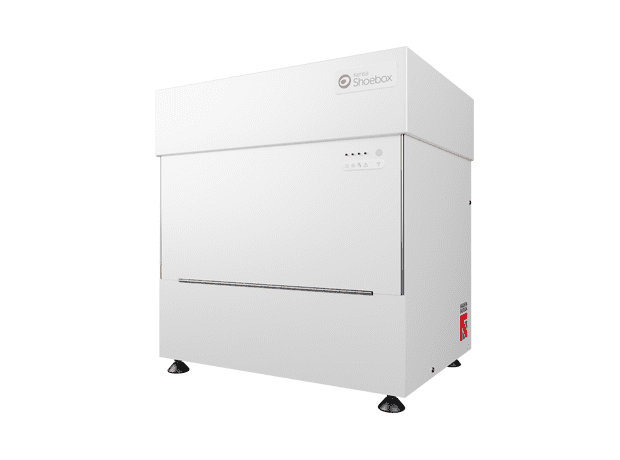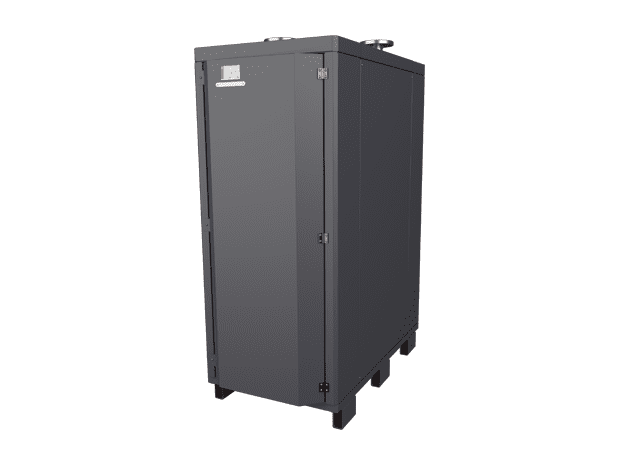An installer’s indispensable list of heat pump essentials
The market opportunity for installers in this industry is strong. Get familiar with the strengths of each renewable heat technology to ensure wider scope and profitability.
To help, Alison Harding and Darren Veal, Technical Support Engineers for Kensa Heat Pumps, have combined their years of ground source experience to offer an indispensable list of the essentials for any installer venturing into ground source heat pumps.
1. Energy Sources
One of the first and most important things to remember about ground source heat pumps is that your heat source options are not limited to just the ground. You can utilise water sources too, including lakes, rivers, ponds, streams, aquifers and even the sea. If the property that requires heating is next to any of the above water sources, then subject to volume and flow rate they could support very efficient and cost effective ground source heat pump installations.
For example, a subway station that was permanently pumping away the flow of natural ground water through a large sump realised that the diverted flow of water from the sump through a heat exchanger could supply enough flow to a ground source heat pump, providing heating and hot water to the subway station offices.
Having a clear understanding of your energy source options and how to apply them could be the difference between winning and losing a job. Think outside the box and if in any doubt speak to your manufacturers.
2. Application
Ground source heat pumps are traditionally used for heating and hot water in domestic buildings. However, awareness of their flexible applications and heat sources have opened up new emerging markets, including holiday parks, lodges, forest retreats, care homes, B&Bs, schools, hospitals, golf clubs, farms, offices, lighthouses, house boats, boat sheds, swimming pools, green houses, wood drying facilities, subway stations, community centres, sports centres – as you can see, the list goes on!
3. District Heating
District heating provides each home with its own ground source heat pump, ensuring heating and hot water independence. The heat network is created by linking multiple properties to a communal ground array, designed to deliver an efficient, reliable and durable source of heat for the life of the property.
This system, known as a Shared Ground Loop Array, overcomes the need for a central plant, the efficiency is not compromised by heat loss from distribution pipework, and there is no need to meter and apportion energy bills between dwellings – avoiding the need to comply with Heat Network (Metering & Billing) Regulations 2014.
4. Location
Some ground source heat pumps can be bulky units which take up space in a utility room or kitchen. It’s entirely possible to site a heat pump outdoors, as long as you can provide a weatherproof enclosure. This can be a good way to maximise space indoors, and eliminate nuisance noise.
Smaller units on the market are designed to be installed inside the property, typically in a kitchen or airing cupboard, and are exceptionally quiet, such as Kensa Heat Pumps’ Shoebox range.
5. Controls are easy
Much like a boiler, you can use traditional controls with a heat pump. The controls that come with your underfloor heating can be easily integrated as well, so you can go from traditional and simple, right through to advanced touch screen controls. Pick a control type that suits the end user’s needs and abilities.
Once the heat pump is commissioned and correctly set up, it should be a matter of “fit and forget” – the end user shouldn’t need to change any of the settings on the heat pump, and any adjustments for comfort or timing can be made using the proprietary control system. Some people have the idea that using a heat pump is complicated and confusing – it shouldn’t be!
6. But – it’s not a boiler
It can be tempting to explain heat pumps as just another heat source, “just like a boiler”. That’s fine for explaining in basic terms, but for the installer, it’s worth remembering that there are a few differences.
The lower flow temperatures involved mean that a bit of forward thinking is needed when specifying a system, especially for retrofits.
System design is vitally important. It’s such a big part of installing a heat pump. Kensa provides support at every stage of the installation – including design and technical support.
7. Get the heat emitter sizing correct
Remember that those lower flow temperatures do make a difference to how big the radiators need to be, or how tight the pipework spacing should be in your underfloor system.
Room-by-room heat losses have got to be done in order for your installation to qualify for MCS approval, so make use of them to size your emitters! If you have an underfloor specialist doing a design for you, try to get them to work from the heat loss calculations, rather than making assumptions.
Your hot water cylinder needs to be specified to account for that lower flow temperature as well. The surface area required to transfer heat will be bigger than a standard unvented cylinder’s coil. Some manufacturers use “tank in tank” cylinders, which is one way to overcome this issue. Alternatively, look at heat-pump-specific cylinders – make sure the coil size is appropriate though – and not only that, check that the coil diameter and tapping sizes are okay, especially for larger output heat pumps.
8. High-temp DHW is possible
For a long time, heat pumps just weren’t especially good at handling hot water demands because they didn’t generate very high temperatures to start off with.
For some, this meant reliance on direct electric heating to “top up” whatever the heat pump could provide – defeating the object of using a heat pump to begin with.
Luckily progress has meant that using different types of refrigerant within the compressor allows higher temperatures to be achieved. High-temperature heat pumps are increasingly common and can provide flow temperatures high enough that you can even do away with legionella prevention routines in the hot water cylinder. No more immersion heaters required!
9. Maintenance
There aren’t many serviceable parts in a heat pump. They actually need very little in the way of servicing; just a check over once a year, making sure the pressure in the heating system and the ground loop is as it should be, and that the antifreeze is at the right concentration. Clear out any strainers fitted to the ground array and if there’s a filter on the heating system, check that too. Of course, an unvented cylinder should be checked annually too, so you can always kill two birds with one stone and do this check at the same time.
Want to learn more about installing a heat pump?
Take a look at all the support we offer installers here – from ground source heat pump training to the MCS Umbrella service.







